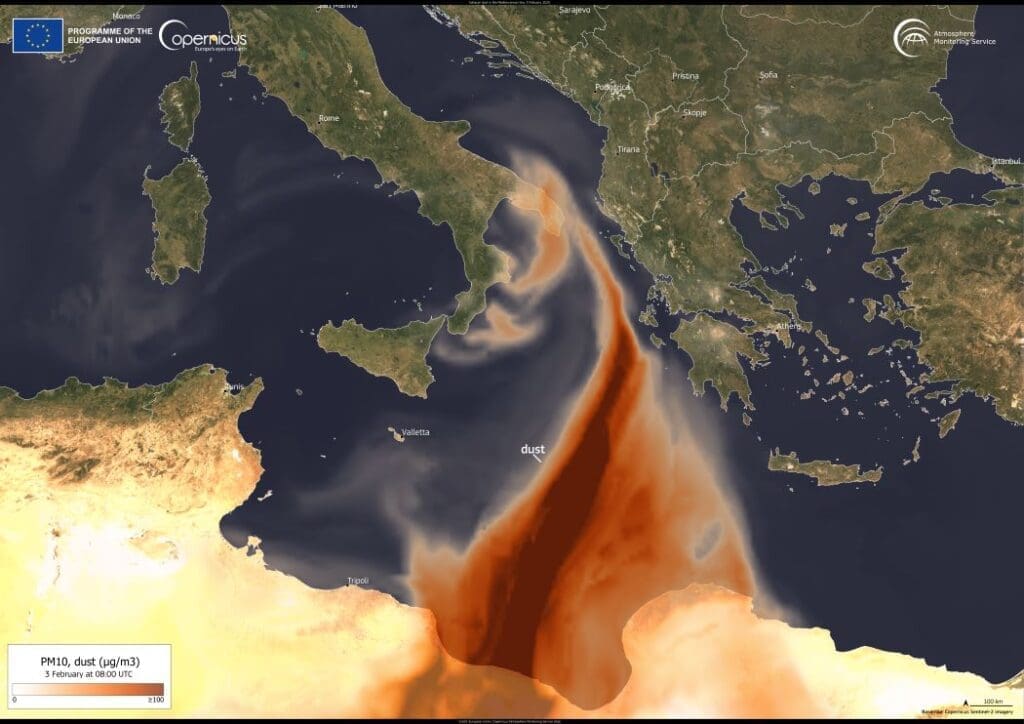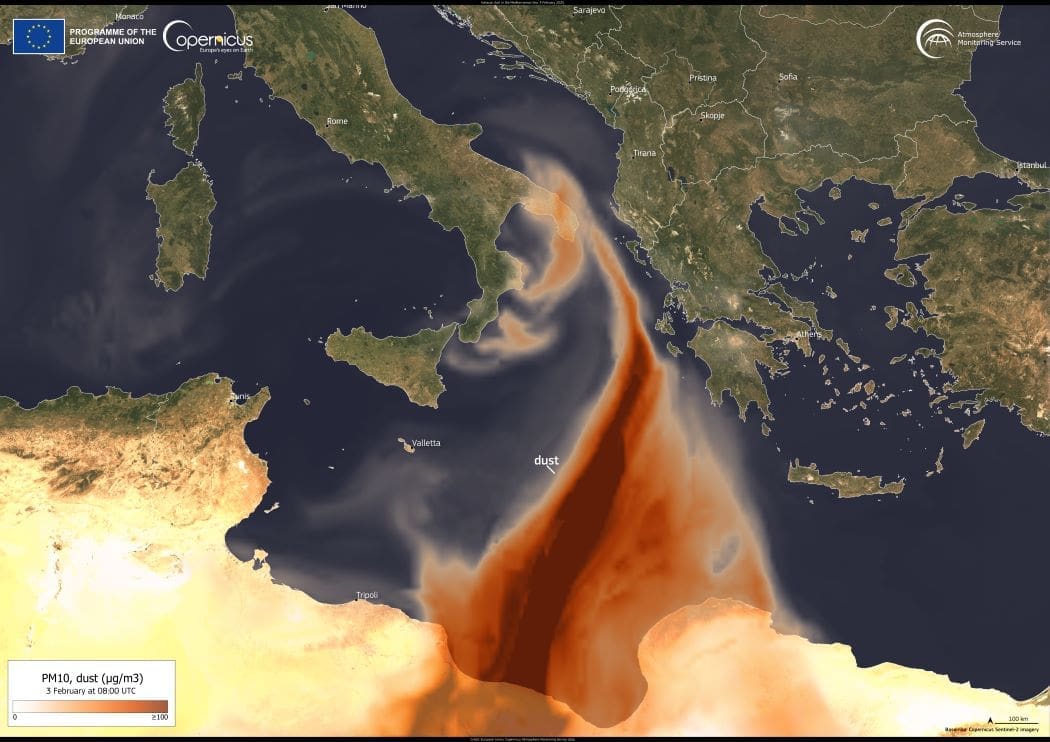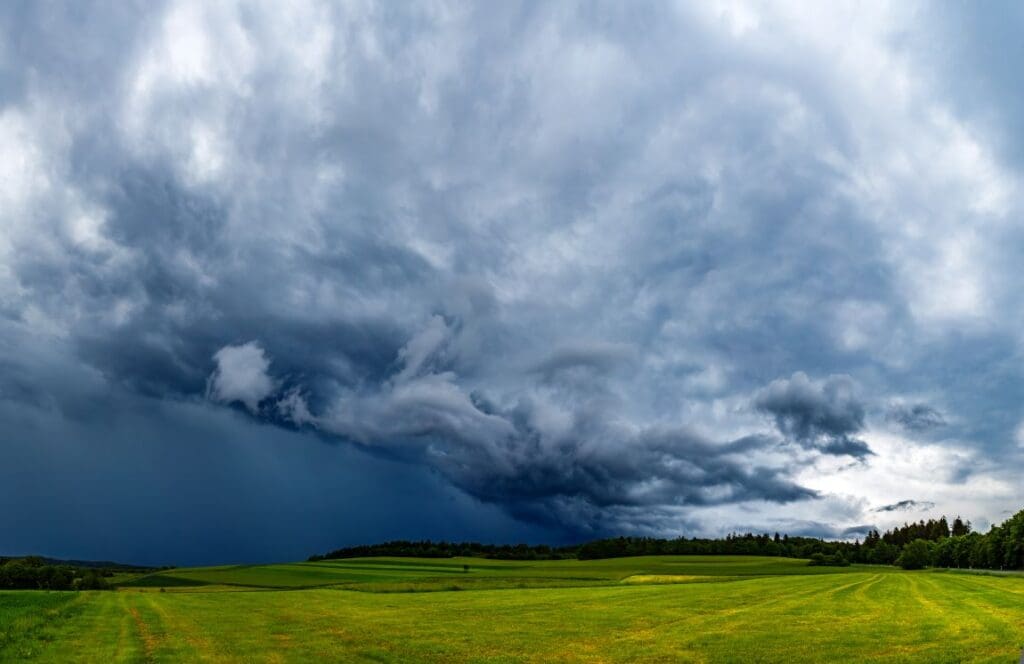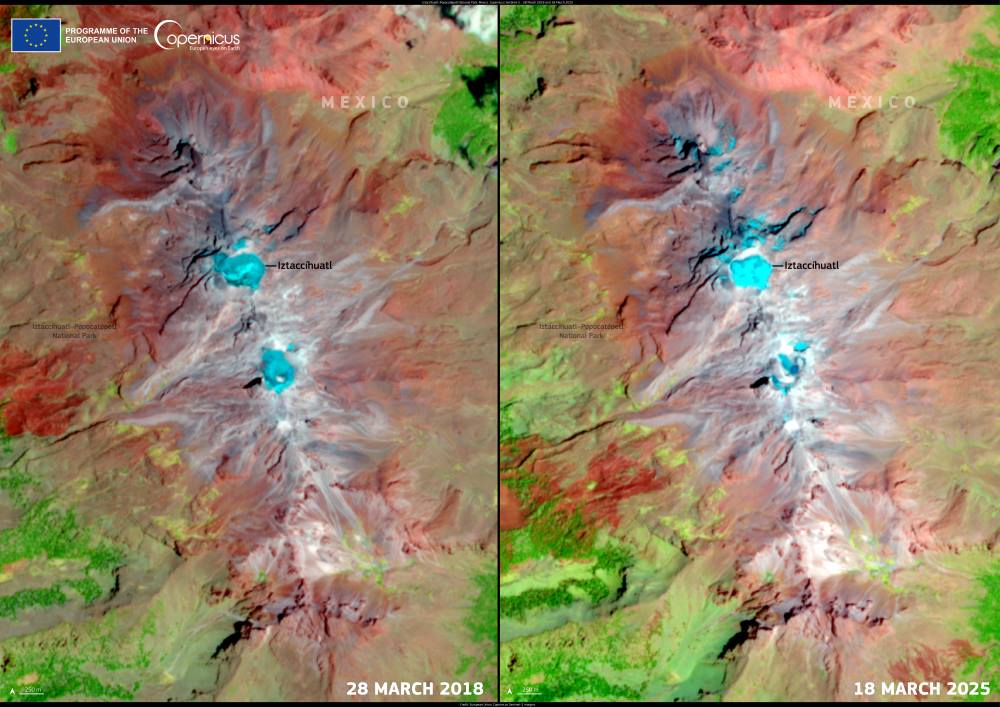On 2 February 2025, strong winds carried a vast cloud of Saharan dust across the Mediterranean, reaching southern Italy. The phenomenon, driven by a cyclone originating in North Africa, caused skies over Sicily and Calabria to take on a yellowish hue, affecting air quality and visibility.

By the following day, the dust plume continued eastward toward Greece. A visualization from the Copernicus Atmosphere Monitoring Service (CAMS), based on data from 3 February at 8:00 UTC, captures the movement of the airborne particles southeast of Italy as they approached Greece.
CAMS provides global air quality monitoring and forecasts, tracking atmospheric pollutants and aerosols to help communities respond to such events.
Featured image credit: European Union, Copernicus Atmosphere Monitoring Service Data




